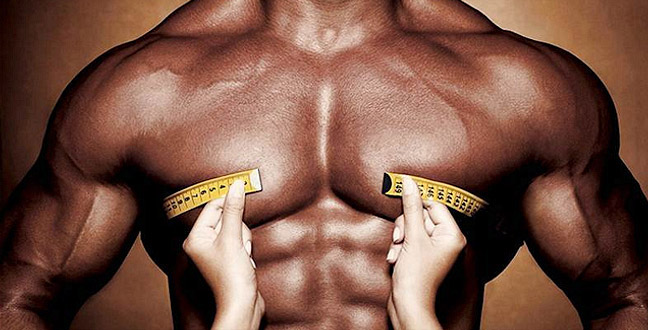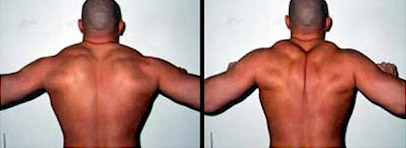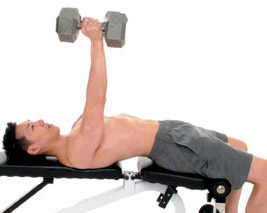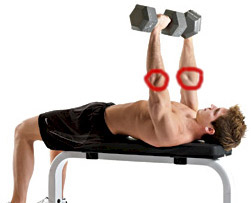Balancing your bodybuilding program with your career, friends, family and other hobbies/pursuits is hard work enough... the last thing you need on top of this is to waste valuable energy on redundant, ineffective nutritional techniques that do nothing but make your life more complicated.
Proper bodybuilding nutrition is actually fairly straightforward, and you really don't need to employ anything anything fancy or overly complex in order for your results to be maximized
Ignore the endless "bro science" out there and ignore the so-called "gurus" who offer up their "advanced strategies" with no real scientific backing behind them.
Let's keep things efficient, straight to the point and dispel 6 common nutritional myths that continue to circulate in the bodybuilding community.
Avoiding these 6 myths will make your life a heck of a lot easier, will make your diet far easier to follow, and will still yield the same muscle building and fat burning results that you're after...
Bodybuilding Nutrition Myth #1
You must consume a meal every 2-3 hours throughout the day in order to maximize muscle growth and fat loss.
The idea behind the "eat every 2-3 hours" rule is that these frequent feedings (usually around 6 per day) will keep the body in an anabolic state and keep your fat burning metabolism elevated by keeping you out of "starvation mode".
The reality?
Digestion and absorption is an incredibly gradual process, and most standard sized meals will keep your body in a net anabolic state for around 5-7 hours.
Not only that, but there is quite a bit of research directly examining the effects of meal frequency on basal metabolic rate, with frequent feedings showing no marked improvements. (In fact, some studies actually show less frequent feedings to be superior)
If you want to maximize muscle growth and/or fat loss, just focus on meeting your total protein/carbohydrate/fat requirements over the course of the day as a whole. Lay it out in a way that fits your schedule and that falls best into your natural pattern of hunger.
You'll get the same results, and without the headache that comes with obsessing about getting a meal in every few hours.
Bodybuilding Nutrition Myth #2
You must consume a whey protein shake immediately following your workout to prevent muscle catabolism and kick-start the recovery process.
Once again, digestion/absorption is a very gradual process, and as long as you consumed a meal of some kind within a few hours of beginning your workout, those same nutrients are still being broken down and utilized even after your session is over.
Slamming a protein shake within 36.7 seconds of your last rep certainly isn't going to hurt, but it isn't mandatory either. If you want to wait an hour or two, it's not going to make any noticeable difference to your results.
Bodybuilding Nutrition Myth #3
You must avoid consuming carbohydrates in the evening in order to prevent excess fat storage.
Every day, your body expends a certain number of calories (calories are just a measurement of energy) to fuel natural bodily processes (such as breathing, digestion and circulation) plus all of your additional activities.
In order to lose body fat, you have to create a “calorie deficit” by taking in fewer calories than you burn. This stimulates the body to tap into its excess fat stores to obtain a source of fuel.
As long as that calorie deficit is consistently in place, the specific timing of your carbohydrate consumption will NOT make any difference in the overall picture.
Fat loss and fat gain is not an "on/off" switch. Both processes are happening simultaneously.
Whether you burn more fat earlier in the day and store more later on, or store more fat earlier in the day and burn more later on, the net result is still going to be the same as long as your total calorie intake remains constant.
Bodybuilding Nutrition Myth #4
You must avoid eating before bed in order to prevent excess fat storage.
The basic logic here is the exact same as the previous myth.
Fat loss/fat gain is determined by your overall net energy balance. As long as your total calorie intake remains constant, it makes no difference whether you burn/store more fat earlier in the day or burn/store more fat later in the day. The net result will be the same regardless of nutrient timing. It is a basic matter of energy consumed versus energy burned.
As long as you're tracking your total protein/carb/fat intake accurately each day, you can eat whenever you feel like it without worry.
Bodybuilding Nutrition Myth #5
Stick to slow-absorbing carbohydrates on the low end of the glycemic index.
The glycemic index (GI) is a chart that ranks carbohydrates from 0 to 100 based on how quickly or slowly they raise blood sugar levels in a 2-hour period after they are consumed. The idea is that consuming carbs on the low end of the scale will provide you with a "steady stream" of sugars rather than a quick spike, which prevents excess fat storage.
Here are the two main problems (among many) as it relates to the GI...
* GI rankings are based on the glycemic effects of specific foods that are consumed isolated and in a fasted state. Aside from first thing in the morning, you’ll never be consuming your carbohydrates in a fasted state.
* A typical bodybuilding nutrition plan always combines carbohydrates with fats and proteins. Consume your carbohydrates as part of a complete meal and the glycemic response can be dramatically altered.
As long as the majority of your carbohydrate intake is coming from minimally refined, higher fiber sources, the glycemic index rankings are essentially useless.
Bodybuilding Nutrition Myth #6
You must "eat clean" 24/7 if you really want to get into impressive shape.
Your body cannot recognize individual food items as separate entities. It does not say "that's a chicken breast, that's an apple and that's a cup of rice". It only sees the complete diet as a whole - the total protein, carbs, fats and micronutrients that you consume each day.
As long as the majority (around 80-90%) of your diet is being derived from "clean" food sources (lean/high quality protein, minimally refined/high fiber carbs and healthy fats) and your vitamin/mineral/other micronutrient needs are being met, slipping in some "cheat foods" to fill in the remaining 10-20% is not going to make any difference to your results.
What it WILL do, however, is make your overall life more enjoyable while yielding the same results as the next guy who is eating nothing but chicken, broccoli and brown rice 24 hours a day.
Wednesday, 22 March 2017
Saturday, 11 March 2017
abs exercises
Most trainees think they're performing all of their exercises
correctly in order to maximize their progress...
In reality, the vast majority are making a ton of simple, fundamental mistakes that shift the stress off of the target muscles, promote muscular imbalances and increase the chances of injury all at the same time.
The Internet makes it easy for any Joe Schmo to jump online and post anything they please… but the vast majority of these people are NOT legitimate fitness experts and are NOT giving advice based on real science.
With the endless amount of conflicting, misleading advice found all over the web on blogs, YouTube channels and forums these days, most people trying to build abs and lose fat have been left totally confused and with very few places to turn to for proper guidance.
At best, these ineffective techniques leave you with modest results while causing you to waste a ton of unnecessary time, effort and money in the process… and at worst, they leave you with no results at all, possibly even at the expense of your health and safety
The reasons why the majority of people do not have abs are huge and the major stumbling block is that plenty of so called “experts” are still teaching old fashioned advice for building abs that just doesn’t work.
correctly in order to maximize their progress...
In reality, the vast majority are making a ton of simple, fundamental mistakes that shift the stress off of the target muscles, promote muscular imbalances and increase the chances of injury all at the same time.
The Internet makes it easy for any Joe Schmo to jump online and post anything they please… but the vast majority of these people are NOT legitimate fitness experts and are NOT giving advice based on real science.
With the endless amount of conflicting, misleading advice found all over the web on blogs, YouTube channels and forums these days, most people trying to build abs and lose fat have been left totally confused and with very few places to turn to for proper guidance.
At best, these ineffective techniques leave you with modest results while causing you to waste a ton of unnecessary time, effort and money in the process… and at worst, they leave you with no results at all, possibly even at the expense of your health and safety
The reasons why the majority of people do not have abs are huge and the major stumbling block is that plenty of so called “experts” are still teaching old fashioned advice for building abs that just doesn’t work.
Under the right dietary and training conditions, your body can actually use your own body fat to provide energy for building muscle, practically doubling the speed of fat loss.
Low-carbs diets work. Low-fat diets work. But neither works forever. You can take the best features of both and combine them to actually FEED off each other with NO plateaus EVER.
Training with high reps and isolation exercises for fat loss is a waste of time and energy. It will practically guarantee that you lose muscle.
Your own natural metabolism is FAR more powerful for burning fat than any fat-loss pills or potions you could ever take IF you know how to stimulate it properly.
Precise manipulation of the nutrients in your diet (protein, fat and carbs) can have extraordinary muscle-building and fat-burning hormonal effects on your body
Low-carbs diets work. Low-fat diets work. But neither works forever. You can take the best features of both and combine them to actually FEED off each other with NO plateaus EVER.
Training with high reps and isolation exercises for fat loss is a waste of time and energy. It will practically guarantee that you lose muscle.
Your own natural metabolism is FAR more powerful for burning fat than any fat-loss pills or potions you could ever take IF you know how to stimulate it properly.
Precise manipulation of the nutrients in your diet (protein, fat and carbs) can have extraordinary muscle-building and fat-burning hormonal effects on your body
Now let’s get one thing straight: Even if you heard about spot reduction, there’s no such thing. Only when you manage to shed that extra weight off, will you be able to reveal your abs.
Another mistake concerning abs is believing what you see on the commercials late in the evening when you’re watching TV, promising that you’re going to have great looking abs by using a certain kind of gizmo or gadget.
The thing is that if everything were that simple, everyone would look great by now and not complain about having no abs at all.
The reasons they cannot have those great looking abs is because those gadgets are good but only half the battle, nutrition along with exercise are the other key components.
The reasons they cannot have those great looking abs is because those gadgets are good but only half the battle, nutrition along with exercise are the other key components.
You Will NEVER Lose Your Excess Stomach Fat and Carve Out Those Rock-Hard Six-Pack Abs that You Desire by Wasting Your Time with 100's of Crunches and Other "Abs-Pumping" Exercises...
Nor with Those Bogus Ab-Gadgets, Gimmick Diets, "Fat-Burner" Pills, and "Miracle" Supplement Powders that are Scamming You Out of Your Hard-Earned Money!
Instead, Discover the Tried-and-True Training & Nutrition Secrets That the Super-Lean Use to Strip Away Stubborn Stomach Fat and Develop Sexy Flat Abs
Nor with Those Bogus Ab-Gadgets, Gimmick Diets, "Fat-Burner" Pills, and "Miracle" Supplement Powders that are Scamming You Out of Your Hard-Earned Money!
Instead, Discover the Tried-and-True Training & Nutrition Secrets That the Super-Lean Use to Strip Away Stubborn Stomach Fat and Develop Sexy Flat Abs
Saturday, 4 March 2017
fitness tips lat workouts
The lats are a common weak point for most bodybuilders for 2 main reasons:
1) Improper form that causes the biceps, upper back and rear shoulders to take on most of the load.
2) Unlike most of the other muscle groups of the body, you can't actually see your lats as you're training them. This can sometimes make it difficult to develop a strong mind-muscle connection.
Today I'm going to share 4 simple but highly effective back training tips that you can start using right away to increase lat stimulation and growth.
These tips can be applied to both of the primary lat exercises you'll be performing in the gym: pullups/pulldowns and rows.
Big lats will go a long way in enhancing your upper body width and thickness (while creating the illusion of a smaller waist) so make sure to pay close attention here..
Back Training Tip #1
Retract your shoulder blades.
Retract your shoulder blades.
Every lat movement should start off with the shoulder blades slightly pinched together. This will increase lat activation throughout the exercise.
Back Training Tip #2
Arch your lower back.
Arch your lower back.
Keep a small arch in your lower back and puff out your chest. Again, this will decrease the involvement of surrounding muscles and shift the stress onto the lat muscles.
Back Training Tip #3
Pull through your elbows.
Pull through your elbows.
Imagine that your forearms/wrists/hands are simply "hooks" that are attaching you to the weight. Now, focus on moving the weight by pulling with your elbows only.
When you pull through your hands and forearms, you end up recruiting your biceps to a huge degree. This is one of the biggest lat training mistakes that 90% of lifters make.
Have you ever noticed after a set of pull ups or pull downs that you end up with a huge pump in your biceps? This is because they're the ones actually doing most of the work, while your lats are receiving minimal stimulation.
**
One other tip you can employ to limit bicep involvement even further and build big lats is to use a set of lifting straps for all of your back exercises.
These help to almost completely eliminate your grip from the equation, allowing you to focus 100% on the lats throughout the exercise.
Back Training Tip #4
Pull the weight at an angle rather than straight up and down.
When you pull the bar, cable or dumbbell straight up and down, you end up mostly hitting your upper back and rear shoulders.
To specifically target the lats, make sure to do the following:
For rowing movements: Keep your torso a bit more upright (around 45 degrees) and pull the bar at an angle toward your waist and not your stomach.
For pullups/pulldowns: Lean back and pull the bar into your upper chest.
There you have it: 4 simple tweaks that you can master in just a few minutes to instantly increase lat stimulation, build big lats and get a thicker, wider upper body as a result.
Start applying these tips on your very next back workout and feel the difference for yourself.
Wednesday, 1 March 2017
3 KILLER CHEST TRAINING TIPS FOR THICK, POWERFUL PECS

So you've been cranking out your chest pressing movements with full intensity down pat... and your chest still isn't growing the way you want it to?
You're not alone. While proper chest training may be simple on paper, the real key to explosive chest growth is in the execution. And this is an area where most trainees, quite frankly, royally screw up. Most people know that the core foundation of any effective chest workout is heavy pressing; barbell presses and dumbbell presses performed on either a flat, incline or decline bench. (Wide-grip dips also fall into this category) But as you probably also know, chest pressing is a compound movement that involves more than just the pecs. Your triceps and anterior delts (the front of the shoulder) are also heavily recruited. Yet, this is precisely the opposite of what most trainees do in the gym. By using incorrect pressing technique, their triceps and front delts get absolutely hammered, while their chest receives moderate stimulation and thus, moderate growth. The good news is that all it takes are 3 simple shifts in your form to immediately direct that muscle stimulating tension OFF of your triceps and shoulders and straight onto your chest. Apply these 3 tips below and you'll be amazed at the difference you feel... Keep your shoulder blades retracted throughout the movement.  By pinching your shoulder blades together and keeping them there as you press the weight up and down, your pecs end up taking on more of the load. You can test this out for yourself right now as you read this... Perform a regular pressing motion with your shoulder blades completely flat. Now perform one with your shoulder blades retracted.
Feel the difference?

Push through elbows rather than your hands.

This one takes a bit of getting used to but will make a huge difference in your ability to limit tricep/delt involvement and maximize chest stimulation.
The simplest way to describe this is to pretend that your hands and forearms don't even exist. Instead, place 100% of your focus on simply pressing your elbow up and across your body. When you press through your hand, your triceps become heavily involved in the movement. By pressing through your elbow, triceps involvement is minimized while pec involvement is maximized.
Get this one nailed down and the difference you'll feel in your chest will be like night and day.
Retract your shoulder blades. Arch your lower back. Press through your elbows. Greater pec stimulation, greater pec growth.
I should note that if you do employ these techniques as outlined you will have to scale back a bit on the amount of weight you're using. That's because when you execute these tips properly, most of the stress is placed onto the chest while the surrounding muscles are largely taken out of the equation.
This is completely fine and should not be something to concern yourself with.
Bodybuilding is about exactly that - building your body. And building your body is a direct function of the amount of overload you place onto the target muscles and NOT about the objective amount of weight you're lifting.
If your primary concern during a chest workout is to impress the girls at the gym (who, by the way, could care less about how big your bench press is) then that's up to you...
But if you really want to build your pecs with maximum efficiency and pack on as much muscle size as possible, leave your ego at the door. Instead, put all of your focus on maximally recruiting your pecs through proper form (as described above) and a good mind-muscle connection.
Happy chest training.
If you found this information helpful get more here
|
Labels:
chest training,
chest work out,
exercise and fitness,
fitness,
get pecs








